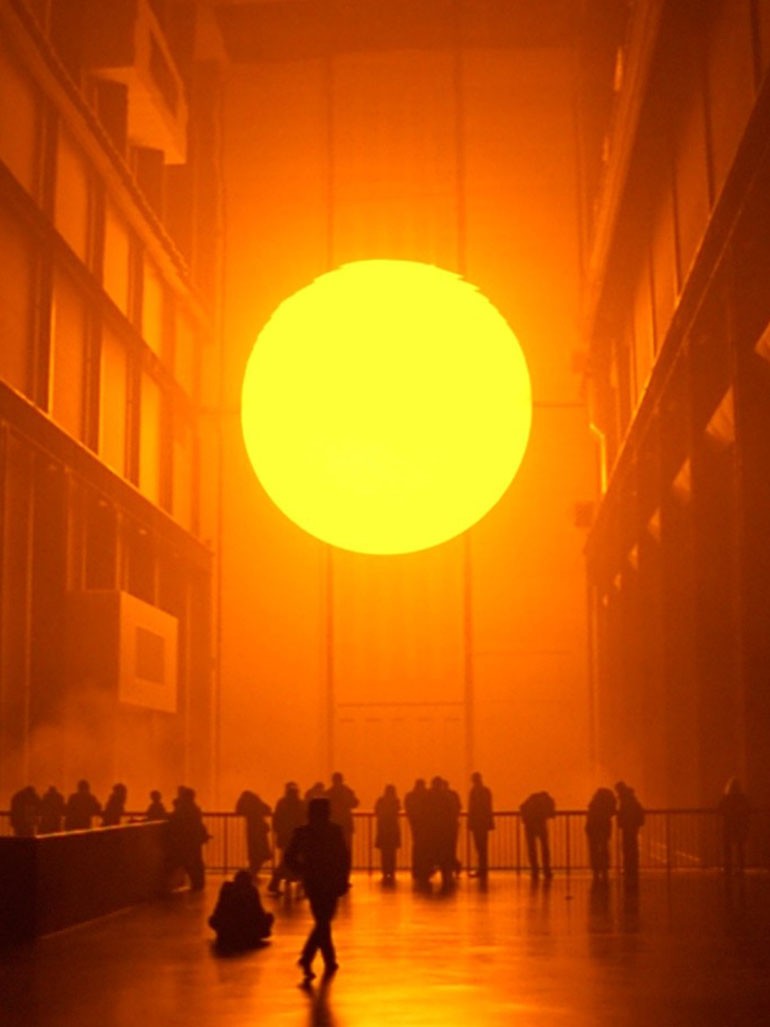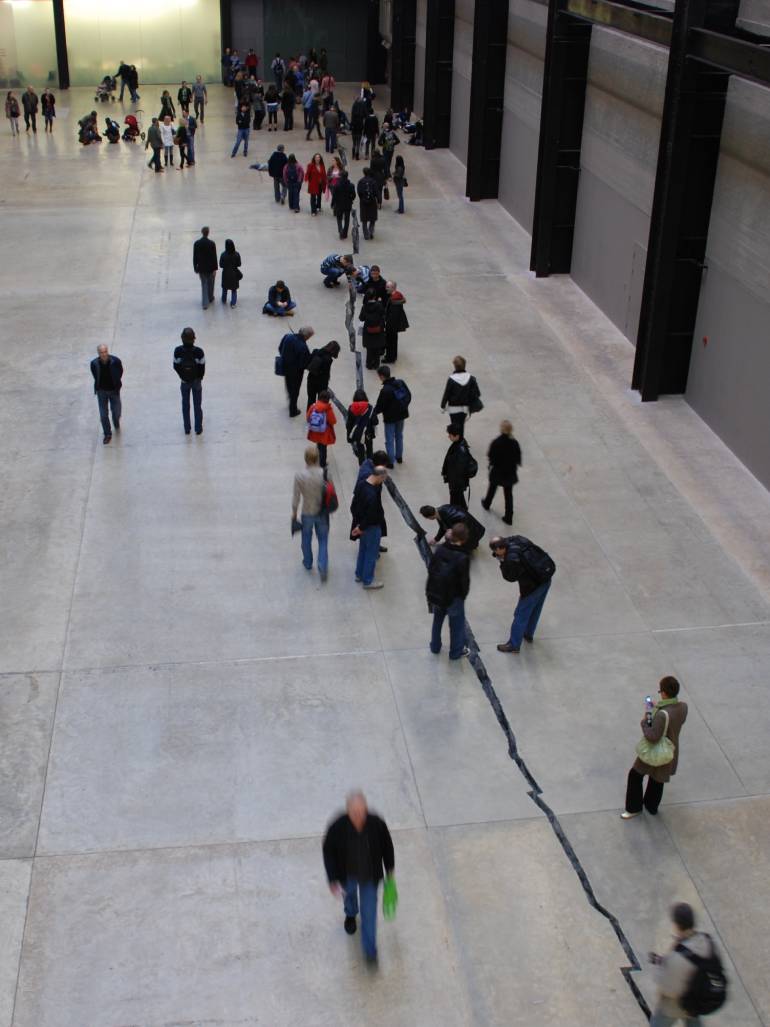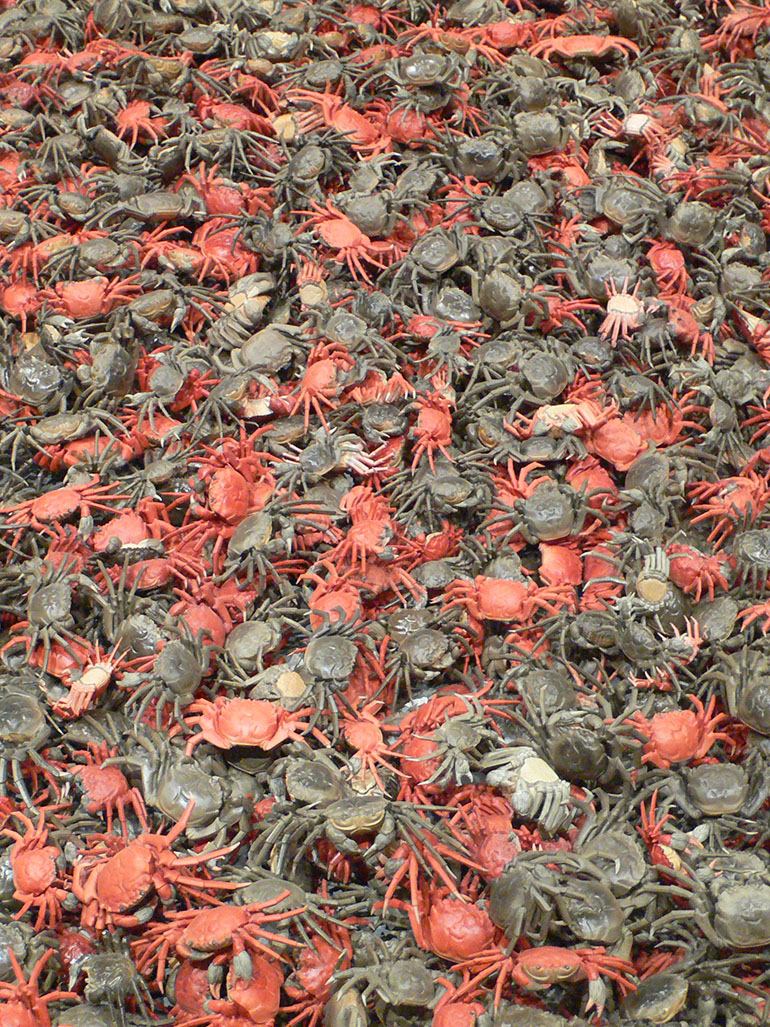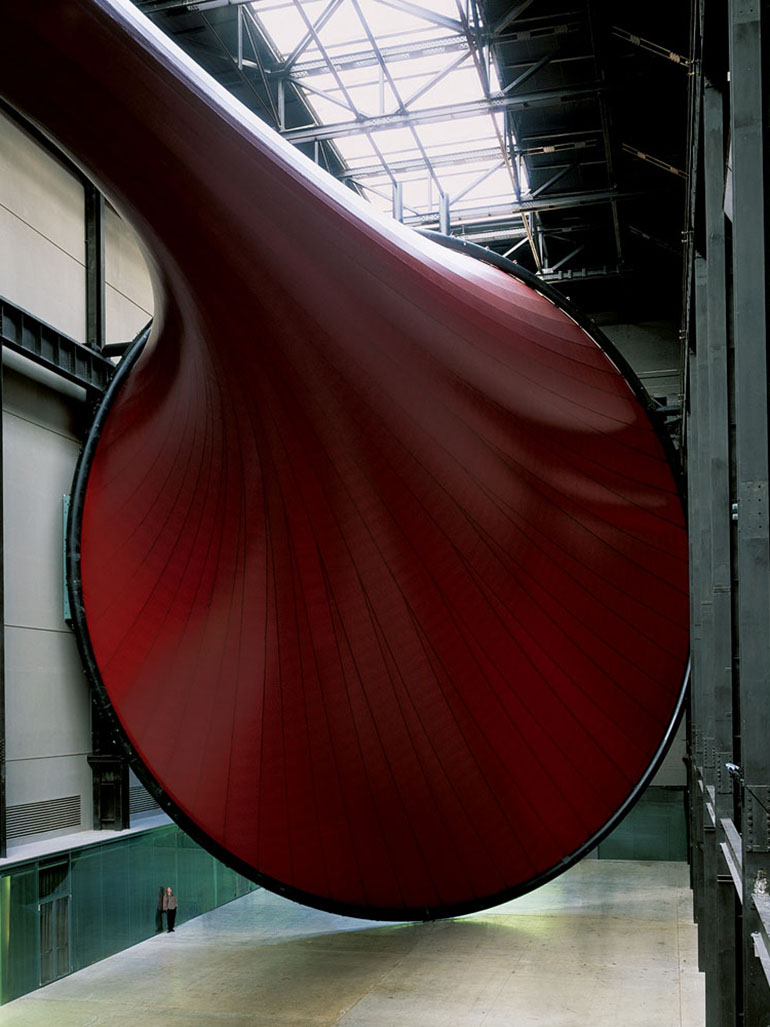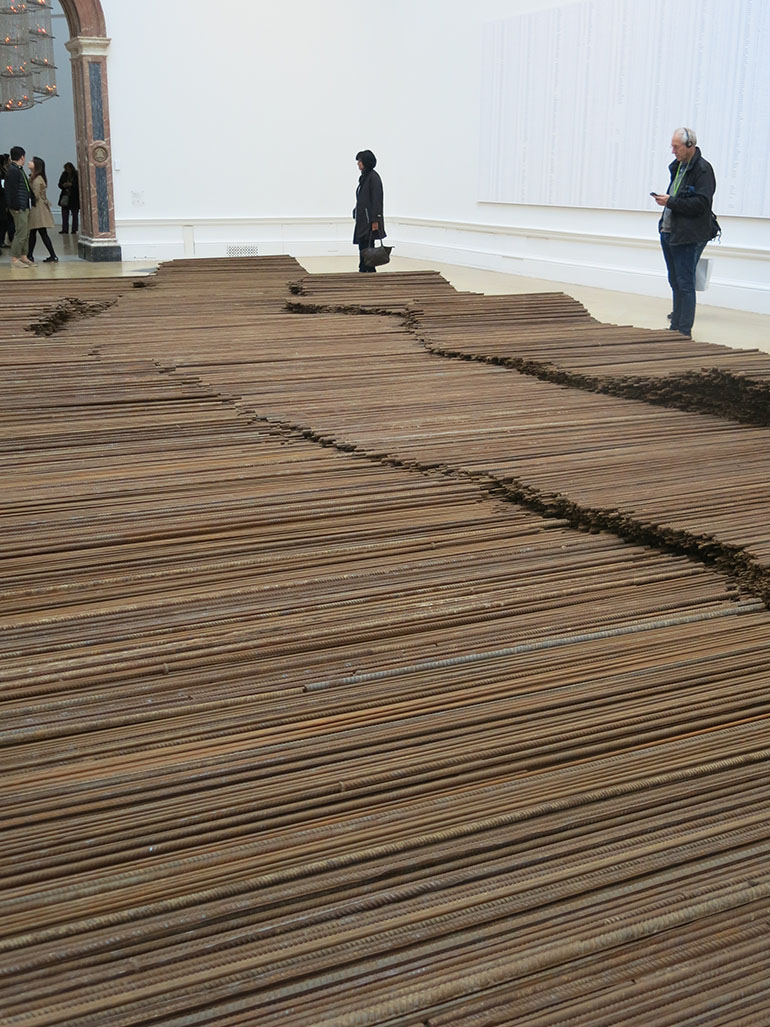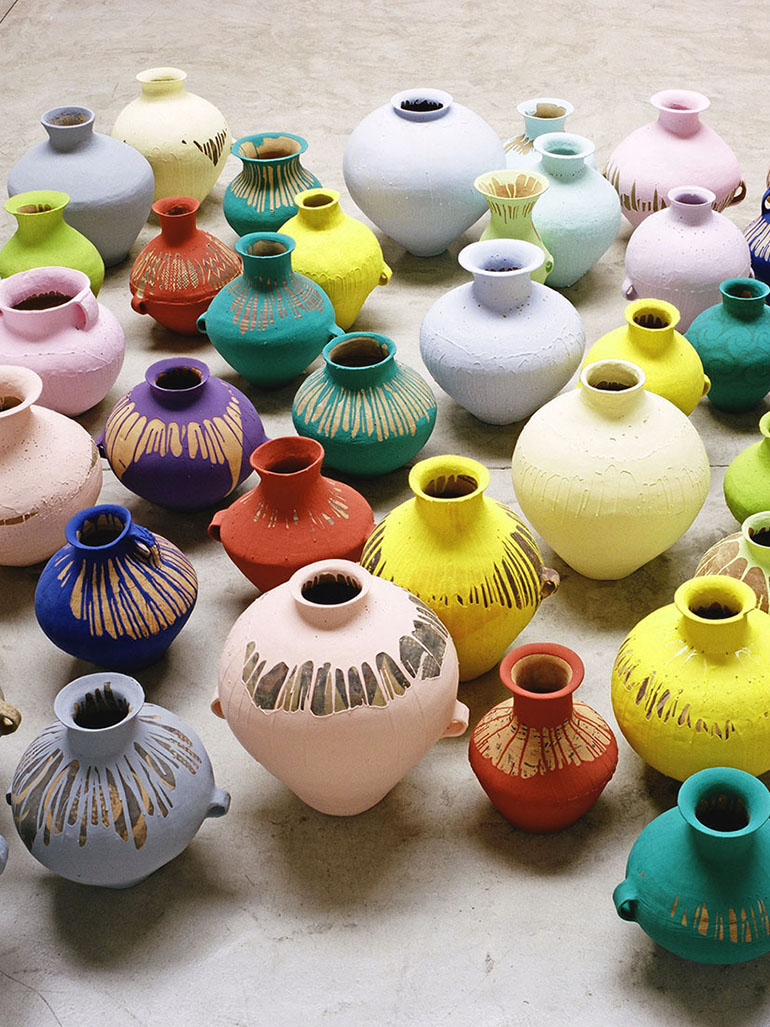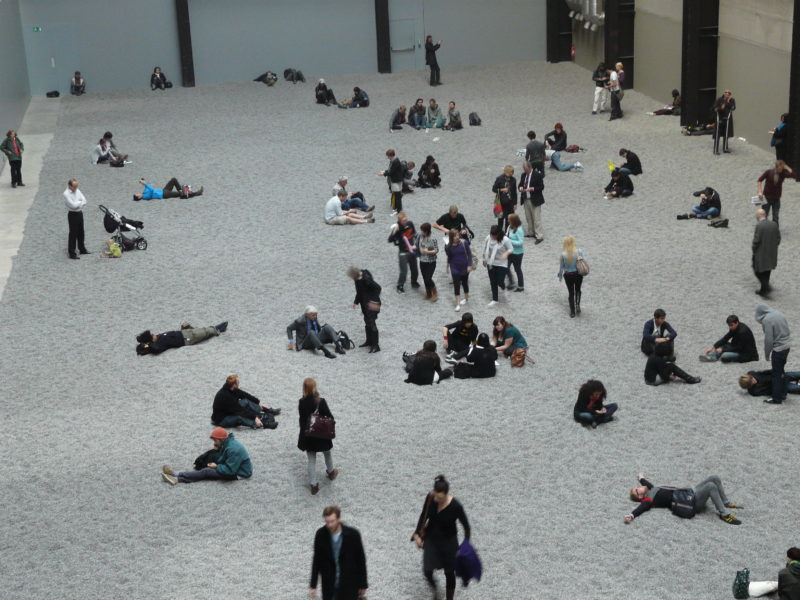
Ai Weiwei’s Sunflowers
Introduction
Introduction
Ai Weiwei emerged as a revolutionary artist on the scene of Chinese art and culture. He served as a protagonist in various dynamic avant-garde movements. His controversial 1 exhibitions have taken the world of art by storm.
He has been represented on top in the list of 100 most powerful people 23 who belong to the world of art. One of his most talked-about artistic installations has been the Sunflower Seeds at the Tate Modern Turbine Hall, London.
The artwork at a glance
Ai Weiwei covered the entire floor of the Tate Modern Turbine Hall 45 in London with over 100 million replica sunflower seeds. Each of these seeds was individually handcrafted by the artisans.
The installation was commissioned as a part of the Unilever Series. Visitors were invited to walk over the long stretch of porcelain sunflower seeds covering almost 1000 square meters of the hall. Each of the seeds was uniquely molded, individually fired at 1300c, precisely hand-painted and further fired again at 800c for utmost perfection in Jingdezhen.
The city is primarily famous for the production of Imperial porcelain 67. The production continued for more than two years producing more than 100 million seeds weighing over 150 metric tons that can cover 1000 square meters of the Turbine Hall.
Critics and art lovers alike admired the large installation. The flat landscape of the porcelain sunflower seed husks covered the entire stretch of the eastern end in the Turbine Hall.
Visitors walking across the surface were overwhelmed to discover 100 million seeds individually real-like handcrafted porcelain seeds specially produced for the event. This installation has been the largest artwork of porcelain and was also amongst his most prized exports. Although the seeds appeared identical from a distance, each of them was different.
They were products of hours of hard work and intricate craftsmanship by skilled artisans. For their perfection and accuracy, they were far from being attributed to industrially made products.
Video interview with Ai Weiwei & behind the scenes footage
In this video Ai Weiwei gives insight into the background and production process of one of the most spectacular exhibitions of 2010, Sunflower Seeds at Tate Modern. Follow the artist to the city of Jingdezhen in northern Jiangxi, China, where all of the sunflower seeds have been individually hand-sculpted and hand-painted. The installation in London is made out of millions (five tons) of hand-painted porcelain sunflower seeds. Each actual-size seed is unique and intricately hand-formed and like those shown at Tate Modern painted in Jingdezhen.
Insights about the Seeds Of Hope
Sunflower Seeds refers to Mao Zedong, a former Chinese revolutionary and the leader of the Chinese Communist Party, who referred to his subjects as sunflowers that followed every move he took, making him as powerful as the sun.
Ai Weiwei was not a follower of Mao Zedong and his beliefs, so he led communal movements to challenge his governance. The artist felt the impact of the Chinese government’s restrictions on the people, and he used his art to address his opinions. Ai said 89:
From a very young age, I started to sense that an individual has to set an example in society. Your own acts and behavior tell the world who you are and, at the same time, what kind of society you think it should be.
Many people have also attributed Sunflower Seeds as the ‘Seeds of Hope’. In its initial installment in Tate Modern, the audience was allowed to feel the seeds, step on them, and listen to the sound they make as they move under their feet.
Following the sun, the sunflower is also a well-known metaphor for The People during China’s Cultural Revolution. The seeds provided nourishment at all levels of society, and the ubiquitous discarded husks provided evidence of an individual’s existence.
Ai Weiwei created a deceptively unified field with a large number of individual seeds. Sunflower Seeds comments on social, political and economic issues relevant to contemporary China, such as the individual’s role in relation to the collective.
The tactile and engaging nature of the seeds raises many pertinent questions about the world around us. For example, what is our individual role in society? Do we need to come together to stay powerful, strong, and significant? Are we heading towards a brighter future with our growing desire and money-oriented attitude?
Ai Weiwei always believed that an individual must set an example for society to follow. Only one’s own behavior and acts can define one’s individual self and the society around it.
Through this installation, Ai tried to understand the perception of individual value, number, and each individual’s engagement with society. It was attributed to being a spectacular commission in the Tate Modern Turbine Hall exhibited over the past decade.
Ai Weiwei’s imagination and thoughtfulness are exhibited through his work.
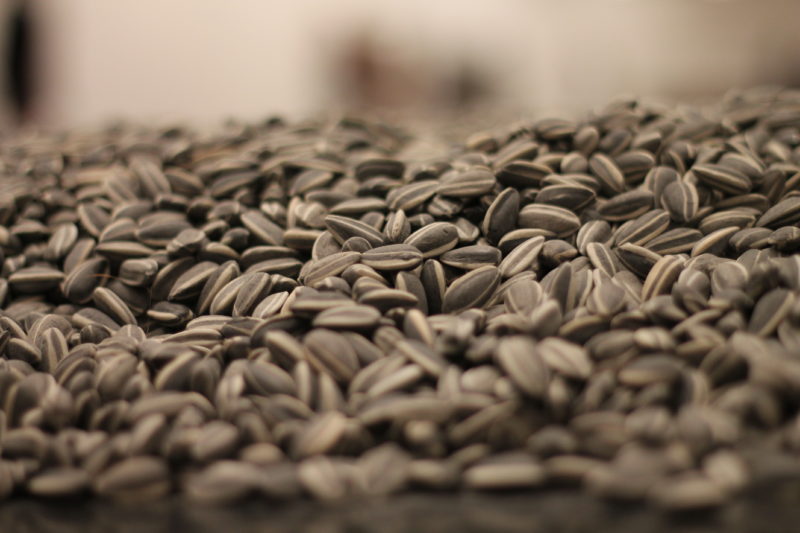
Deciphering the Seeds Of Hope
For many years, Ai Weiwei has created numerous significant social sculptures using vibrant techniques, diverse media, humor, wit, and immense skill. The majority of his works are a depiction of contemporary Chinese society.
Sunflower Seeds represents the relationship between an individual and the world around them. Ai typically presents a whimsical yet provoking statement that boldly and perceptively challenges the tradition encouraging change.
Like many of his other works, Sunflower Seeds touches on issues concerning the economy, society, and politics in his country China. It also reflects on mass production and globalization in his home country and the increasing western consumerism 10.
The installation also reflects on the numerous low-priced laborers who make up the bottom section of the production process. It also represents the monotonous processes, thousands of working hours, and many assembly lines installed in huge factories.
Sunflower Seeds offers an ironic depiction of the contemporary social reality in the Republic of China. Just as the world was experiencing the influence of Chinese industrialization, Sunflower Seeds tried to restore China’s traditional role in manufacturing valued ceramic products. And many of these valued ceramic products have played a key role in enhancing the growth of consumerism in other places outside China.
When the world witnessed the expansion of China as an industrialized nation supplying a myriad of domestic goods to the entire world, the Sunflower Seed installation restored Chinas identity as the prime manufacturer of prized ceramic products.
Many of these prized products have created a culture of consumerism in various other nations. The Chinese population has become a workforce mechanically producing goods for a commercial global market. Furthermore, the mass production of goods ranges from clothes to electronics.
Other exhibitions
Since its first appearance in the Tate Modern Turbine Hall, the Sunflower Seeds installation has appeared in other exhibitions in ever-changing forms. It was presented as the heap of grain at the Magasin 3, the Carpet at the Centro Andaluz de Arte Contemporáneo, and the grey beach at the Tate Modern.
The Sunflower Seeds exhibit at the Tate Modern Turbine Hall was most significant in terms of weight and amount in the year 2010, where 100 million porcelain seeds weighing over 150 tons covered a stretch of 1,000-square-metre to a layer depth of 10cm. The work literally amalgamated an epic sense of magnificence with exquisite craftsmanship.
Another venue that showed this installation was the Haines Gallery in San Francisco. Here, the artwork was slightly smaller, weighing around a quarter a ton, with angled perimeters and modeled corners that make the piece look like the first layer of a step pyramid.
The Haines Gallery installation feels contrived and too restricted for the vast amount of hand-picked sunflower seeds and their massive political insinuations, perhaps due to the unfortunate events at the Tate Modern.
The manufacturing process of the Sunflower Seeds
To manufacture the sunflower seeds, the artist hired more than 1,600 artisans in Jingdezhen city who worked for two and a half years to make the pile of ceramic sunflower seeds. The sunflower husks were manufactured from the kaolin extracted from the local mountains.
The creation of every unique seed followed a conspicuous 30-step procedure of molding, crafting, and hand-painting. The seeds were forged under 1,300 degrees. When everything is accounted for, including labor and material used, the production of Sunflower Seeds is considered the most expensive piece of art in the world.
Sunflower seeds can be commonly found in China as snacks, so it was not by chance that Ai used them in his art. The different layers of the seeds signify several things. The simple yet intriguing layers evoke memories of hardships and hunger 11 from his childhood during the Cultural Revolution.
Ai Weiwei considered the Sunflower Seeds installation as a composition of 100 million individual pieces of art. Despite being a singular tiny sculpture submerged in a pool of a hundred million seeds, every unique seed had a unique identity with its subtle nuances.
It represented an individual worker amongst the group of 1,600 who performed repetitive duties in Jingdezhen to create the masterpiece. It represented an individual in the crowd of 1.3 billion Chinese representing the digital era.
Ai Weiwei tried to trigger a Domino effect through the Sunflower Seed installation magnifying the extensive and complicated process 100-million-times. He devoted innumerable hours and energy with incredible patience to unveil the significance of an individual and the imposing strength created when the individuals gather together.
The manufacturing process of the sunflower seeds can be viewed in the well-documented video above in which the artist is seen moving through the archaic mills, generously instructing the workforce in Jingdezhen.
In the video, Ai Weiwei gives detailed insight into the whole process of manufacturing the sunflower seeds.
Ai Weiwei & Activism
Due to his activism, Ai has brushed shoulders with his native China authorities on many occasions. On April 3, 2011, while his Tate show was on display, he was arrested at the Beijing Capital International Airport and detained for 81 days.
He later said that his actual offense was his political activism, which many in the international community agreed with.
Before his arrest, Ai had blogged for several years, mainly investigating cover-ups and corruption in the Chinese government’s handling of the 2018 Sichuan earthquake and the hosting of the Olympics in the same year.
After his website was pulled down in 2019, he turned to social media to continue his activism. During his incarceration, the international community, including some of the most prominent galleries, rallied for his release.
He was eventually released and charged with tax evasion. However, his passport was withheld, barring him from traveling abroad for four years until it was returned in 2015.
Final words
The Sunflower Seed installation reminded people of how China is gradually becoming the world’s largest economy. It reminded people of the large labor force backing the huge production of goods. Next, it induces a sense of enigma through the layers of artwork, fueling the perception that whatever you see is not exactly how you see it.
Initially, every visitor assumed to see natural Sunflower seeds. The magnificence and scale of the seeds fueled the perception that they are made in large quantities on a factory production line, which again proved false. Their reality instilled a sense of magnificence and astonishment.
Finally, a subtle examination of the installation transcends certain social and political matters where people can see themselves as part of a bigger picture. While the western perception was fueling the idea of an individual fragment, Ai Weiwei’s installation made people contemplate themselves as part of society.
In Weiwei’s installation, every seed contributed to creating a magnificent masterpiece. It made people perceive them as the smallest identity participating in creating something more significant, be it society, environment or workforce.
Ai Weiwei’s Sunflower Seed that started as a sensory experience for the visitors, still holds equally impressive to date and continues to amplify the critical questions raised by the artwork.
Background
About the venue: Tate Modern
About the venue: Tate Modern
Even before the sunflower seeds project, the Tate Modern in London was an important place for the public. It attracted international visitors from around the world for the annual Unilever Commission Programs for projects such as Carsten Höller’s slide 12 in 2006 and Olafur Eliasson’s ambitious project of recreating the sun within a museum 13 in 2003. Turbine Hall, formerly the Bankside power station, became the chosen home of the sunflower seeds replicas.
The Turbine Hall in Tate Modern has 1,000 square meters of floor space. It is here that famous outdoor sculptures stood with some going up to 150 meters in height. There has always been variety. However, none of the artworks were as stunning and unique as Weiwei’s idea.
About Ai Weiwei
Born in Beijing in the year 1957, Ai Weiwei has exhibited impressive artworks in the national and international terra firma. Along with his solo exhibits, he has also contributed to many international group exhibitions. He is the founder of the design company named Fake Design.
He co-founded the renowned China Art Archives and Warehouse based in Beijing. His artwork has formed a part of many significant collections. The Unilever Series that started in Tate Modern Turbine Hall in 2000 continued till 2012 inspiring more than 24 million visitors to the Turbine Hall serving as an inspirational and thought-provoking work of art.

